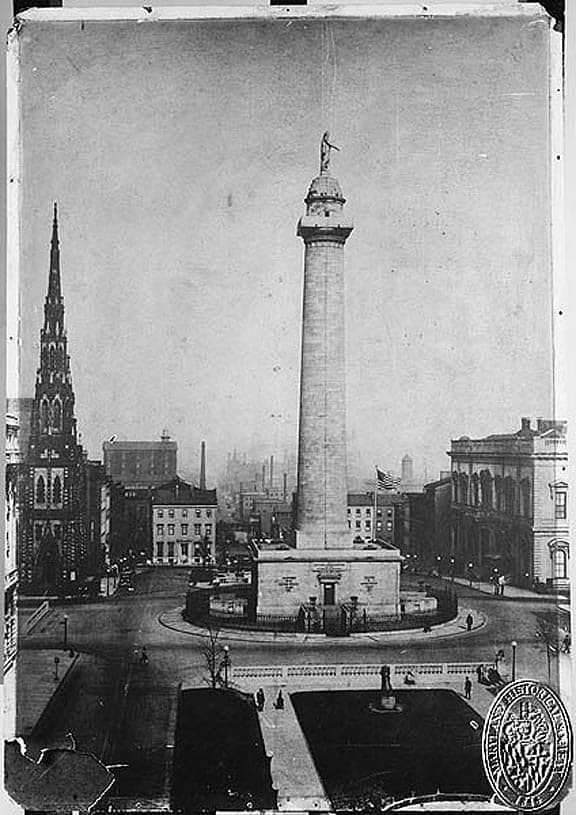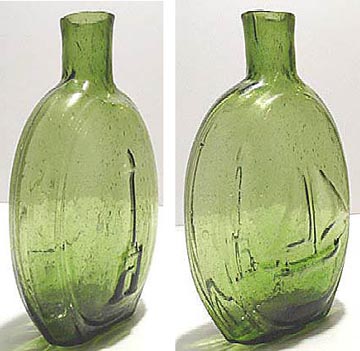I had a little “Aha!” moment today when I came across a post by Steve Sewell over at AntiqueBottles.net where he succintly explained why early Washington Monument historical flasks did not have the Washington sculpture on top of the monument as later flasks such as the Baltimore “Corn for the World” flasks.
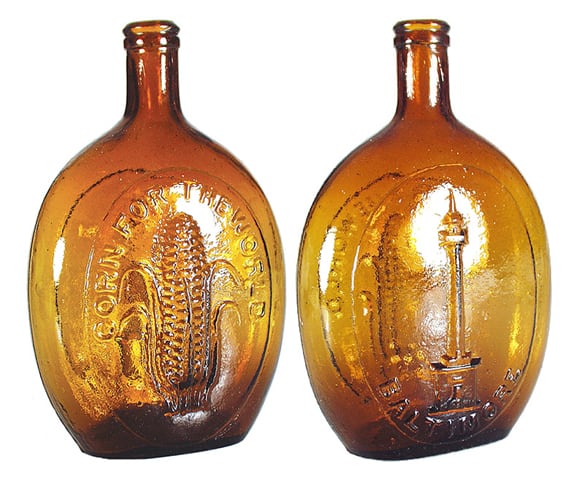
Corn for the World / Washington Monument historical flask with the George Washington sculpture on top of the monument.
“Determining the age of the flasks is quite easy as to the monument on each bottle is void of Washington’s statue affixed at the top. The Monument was partially completed in 1825, 10 years after its inception although a statue of Washington himself was soon to come”.
Steve Sewell
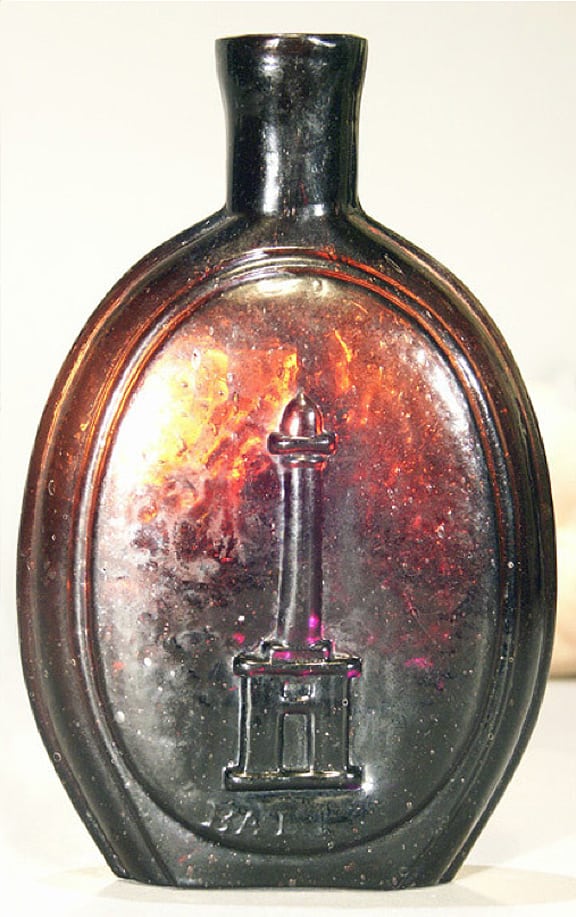
Example of the earlier Washington Monument without the George Washington sculpture. Fells Point/Slope-Monument Balto. Flask. (GVI - 2). American, CA. 1840 - 1860. Deep amethyst, Pontil base, sheared mouth, half-pint. Baltimore Glassworks, Baltimore, MD. Extremely rare color with the boldest mold impression - Dan Morphy Auctions
[Wikipedia] The Washington Monument in the elegant Mount Vernon neighborhood of Baltimore, Maryland was the first architectural monument planned to honor George Washington. In 1815, a statue was designed by Robert Mills, who also designed the Washington Monument in Washington, D.C. Construction began in 1815 and was completed by 1829. The 178 foot doric column holds a ground-floor museum offering information about Washington as well as construction of the monument. Climbing the 228 steps to the top provides an excellent view of the city from the historic neighborhood where it is located. Its neighbors include the Peabody Institute.
The glorification of Washington began long before his death in December 1799, and the dedication of a memorial in his honor seemed certain. A monument honoring Washington in Baltimore was first proposed in 1809, and a committee was formed to commission and fund the monument. In 1811, the first of six lotteries, authorized by the Maryland General Assembly, was held, eventually raising enough funds to construct a Washington monument in Baltimore. Mills’s design was chosen in an architectural competition in 1815, and the cornerstone laid on July 4 of that year.
Early designs included rich ornamentation, six iron galleries dividing the hollow shaft into seven sections, and a quadriga surmounting the column. The design of the completed column is very similar to the Colonne Vendôme, which ultimately derived from Trajan’s Column and was adopted in this time of Neoclassicism in American architecture.
The monument, which was constructed of white marble from Cockeysville, rises 178 feet and consists of three main elements: a low, rectangular base containing a museum; a plain, unfluted column; and, atop the column, a standing figure of Washington. By the time of the monument’s completion in 1829, financial constraints had forced a series of design compromises which simplified the monument.
“Tradition recalls a prodigy occurring when the statue was raised to the summit of the monument – a shooting star dashed across the sky and an eagle lit on the head of the settling general.”
William Rusk, in his book “Art in Baltimore: Monuments and Memorials”, tells the following story about the raising of Italian sculptor Enrico Causici’s marble statue of Washington in 1829. “Tradition recalls a prodigy occurring when the statue was raised to the summit of the monument – a shooting star dashed across the sky and an eagle lit on the head of the settling general.”
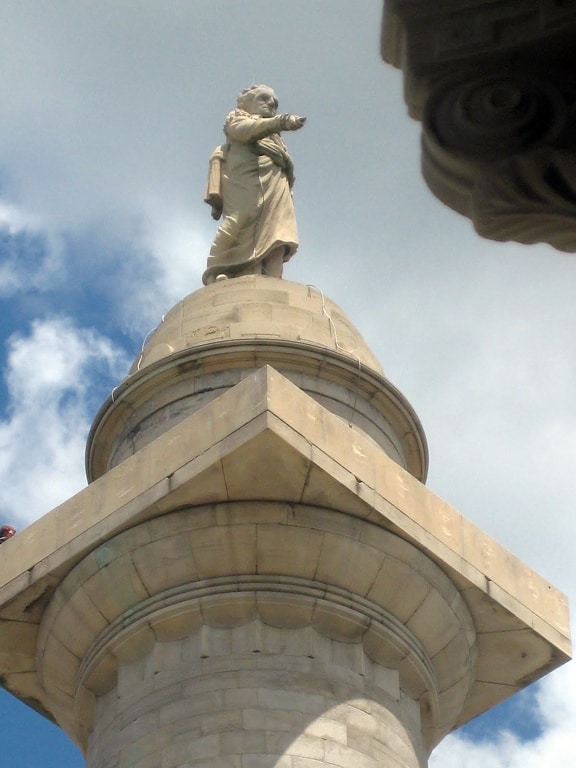
Enrico Causici of Verona, Italy, who had sculpted several panels of the Rotunda of the United States Capitol. Causici created the statue of Washington out of three blocks of marble weighing about seven tons each. Financial considerations having eliminated the Roman chariot statue design, the sculptor instead depicted Washington resigning his commission as Commander-in-Chief of the Continental armies.
Before the monument could be completed, the monument which now resides in Washington Monument State Park (Boonsboro, Maryland), near the Appalachian Trail, was constructed in 1827, making it the first such in the nation. The iron fence around the base was designed by Mills and added in 1838. It contains some of the symbolism that had been deleted from the column due to cost considerations.
This historical flask commemorates George Washington with a figural bust on the front and has the Washington monument located in Baltimore on the reverse. Determining the age of the flasks is quite easy as both monuments on each bottle are void of Washington’s statue affixed at the top. The Monument was partially completed in 1825, 10 years after its inception although a statue of Washington himself was soon to come. These bottles were made between 1824 and 1829 just a few blocks South and East from the monuments site, as in November of 1829, Washington’s statue was finally placed atop the long shaft seen today. Later bottles from the Baltimore glass works and also from these Fells point works have Washington on the monument making them easier to date also. Both bottles are listed as scarce, are a pretty shade of light green, have busts of Washington not seen on like bottles and have rough pontils. Reference: Steve Sewell
Read More: The Washington Monument Bottle – Baltimore
Here are a few pictures of the earlier GI Washington Monument historical flasks.
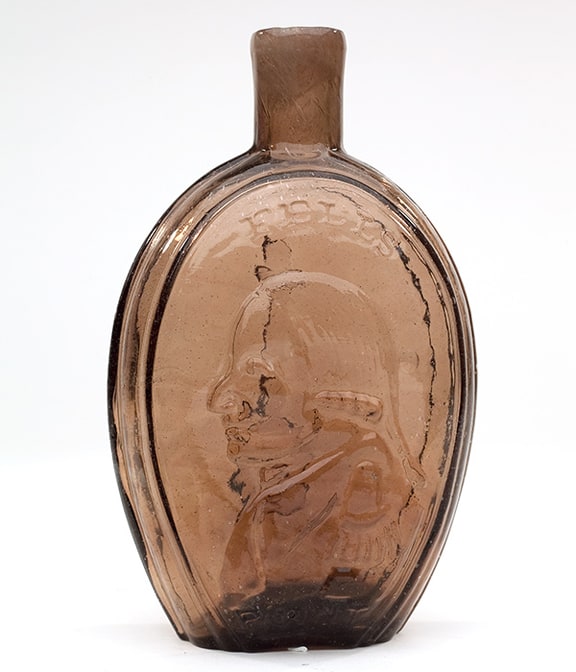
“Fells” / Bust of Washington / “Point” – Monument / “Balto” Historical Flask, Baltimore Glass Works, Baltimore, MD, 1830 – 1850. Beautiful pinkish amethyst with a slight apricot or copper tone, sheared mouth – pontil scar, pint, near mint; GI-20. Beautiful, extremely rare color and a good strong impression! Provenance: Ex. Bill Pollard collection - Lot 2 - American Glass Gallery | Auction 8
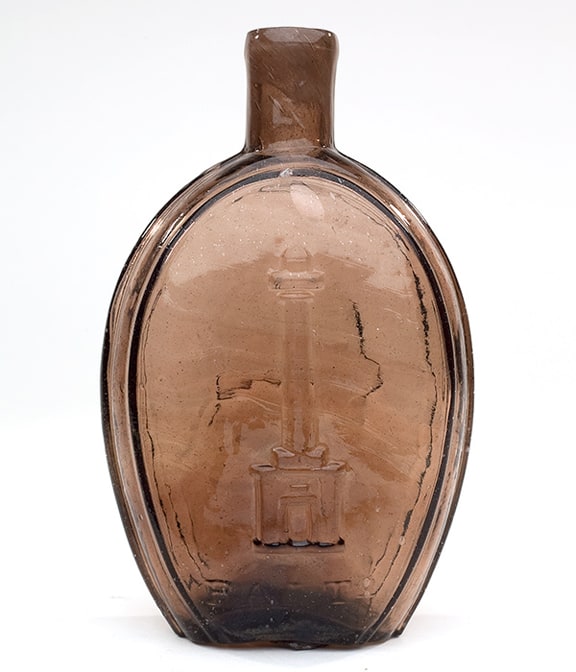
“Fells” / Bust of Washington / “Point” – Monument / “Balto” Historical Flask, Baltimore Glass Works, Baltimore, MD, 1830 – 1850. Beautiful pinkish amethyst with a slight apricot or copper tone, sheared mouth – pontil scar, pint, near mint; GI-20. Beautiful, extremely rare color and a good strong impression! Provenance: Ex. Bill Pollard collection - Lot 2 - American Glass Gallery | Auction 8
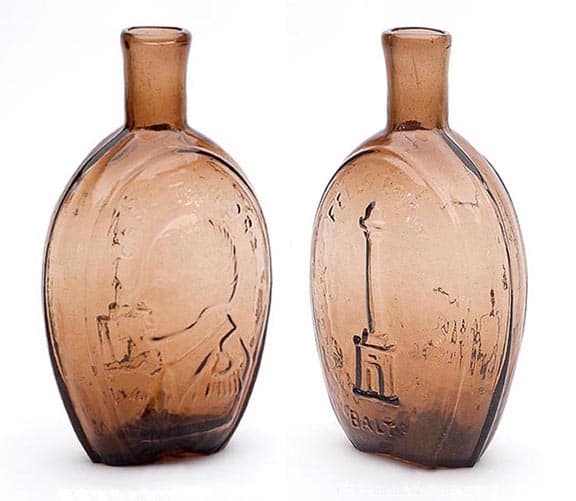
Lot #2 “Genl Taylor” And Bust – “Fells Point / Balto” And Monument Portrait Flask, Baltimore Glass Works, Baltimore, Maryland, 1830-1850. Puce with a gray overtone, inward rolled mouth – tubular pontil scar, pint. GI-73 Fine condition, extremely rare color, beautiful. Ex Edmund & Jayne Blaske collection. Note on the bottom by Tom indicating “one of my favorites”. $21,000 ($24,570.00 includes 17% buyers premium) - Norman C. Heckler - Tom McCandless Collection Auction
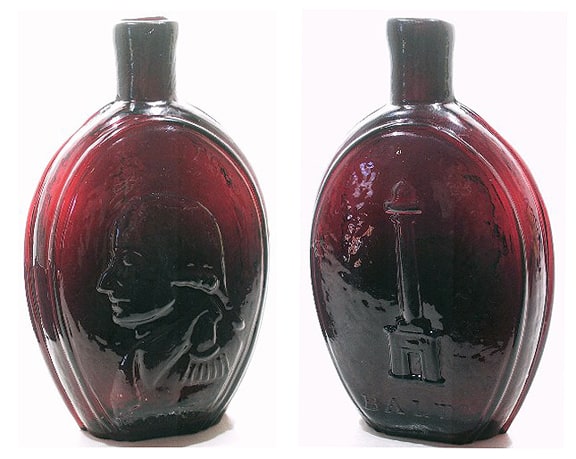
GI-20 "FELLS" / Bust of Washington / "POINT" / Baltimore Monument / "BALTO." in claret color with amethyst tone and pontil base. Blown in Baltimore Glass Works, circa 1830-50 - Antique Historical Flask Hall of Fame
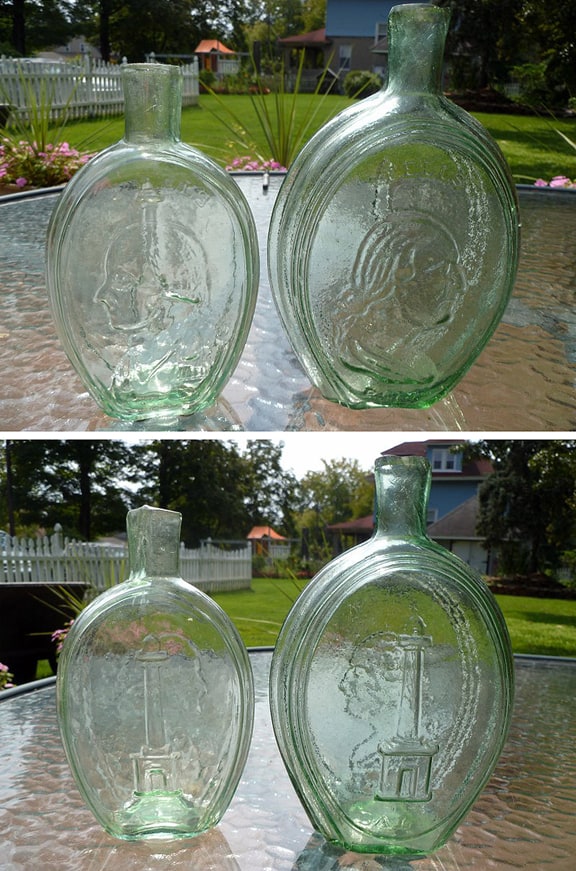
Pair of “Fells” / Bust of Washington / “Point” – Monument / “Balto” Historical Flasks, Baltimore Glass Works, Baltimore, MD, 1830 – 1850. Both bottles are listed as scarce, are a pretty shade of light green, have busts of Washington not seen on like bottles and have rough pontils. The color is what really sets these off. I have two sets of each bottle in my collection as the other two are aqua in color - Steve Sewell on AntiqueBottles.net
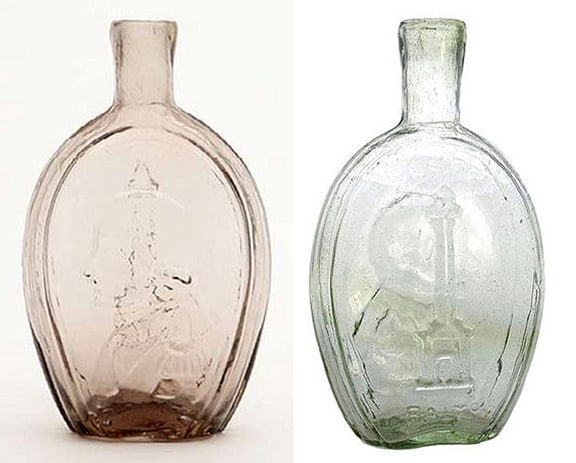
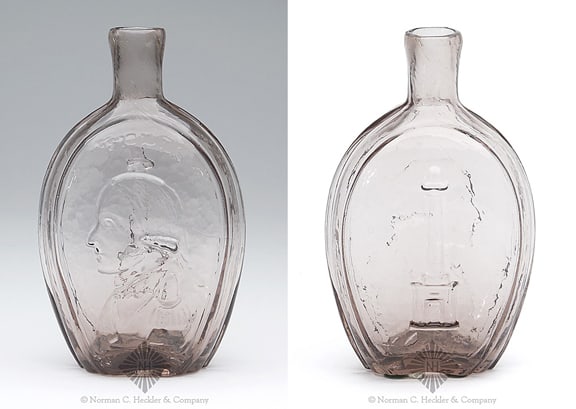
"Fells / Point" And Washington Bust - "Balto" And Monument Portrait Flask, Baltimore Glass Works, Baltimore, Maryland, 1830-1850. Pale pinky amethyst, sheared mouth - tubular pontil scar, pint; (some high point wear on Washington's cheek). GI-20 Beautiful and rare color. Fine condition - Norman C. Heckler & Company - Auction 99

